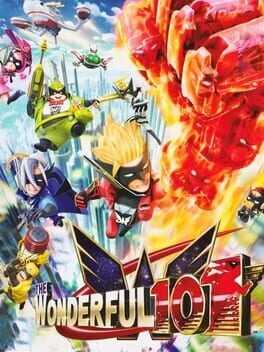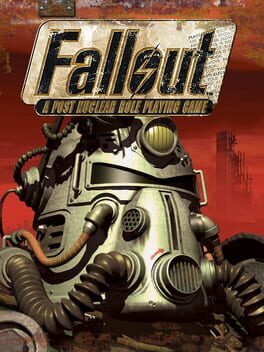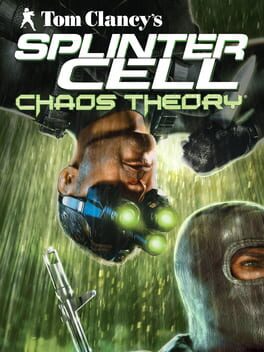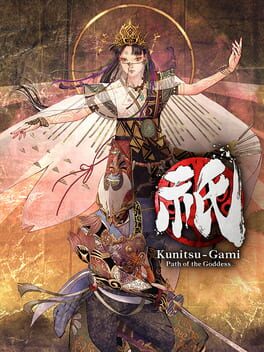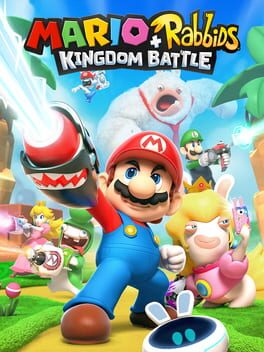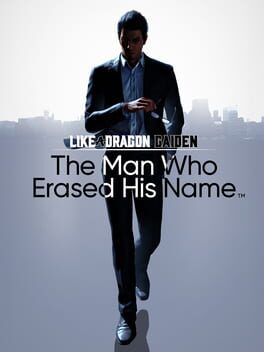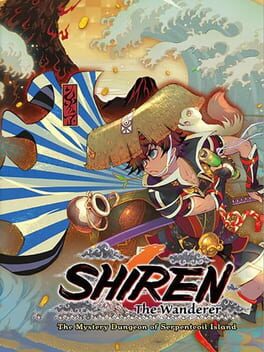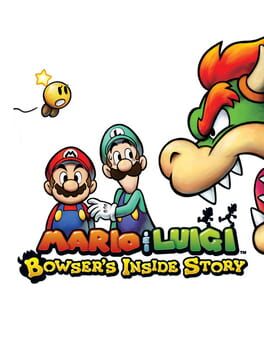ProudLittleSeal
"Abandon all delusions of quality control."
26 y/o Northern Irish fella. I like arcadey stuff and nice soundtracks. My reviews tend to skew positive since I get more fired up about recommending stuff than dissuading.
-----------------------------------------
Ratings:
5.0/5.0 - Wouldn't change anything about it.
4.5/5.0 - Superb. Likely a favourite in one way or another.
4.0/5.0 - Great. I'm probably pretty fond of it.
3.5/5.0 - Good.
3.0/5.0 - Pretty alright.
2.5/5.0 - Middling.
2.0/5.0 - Not so good.
1.5/5.0 - Huh?
1.0/5.0 - I want off this ride.
0.5/5.0 - Send help.
Badges

Replay '14
Participated in the 2014 Replay Event

GOTY '23
Participated in the 2023 Game of the Year Event

Listed
Created 10+ public lists

Pinged
Mentioned by another user

Early Access
Submitted feedback for a beta feature

Treasured
Gained 750+ total review likes

Roadtrip
Voted for at least 3 features on the roadmap

Organized
Created a list folder with 5+ lists

GOTY '22
Participated in the 2022 Game of the Year Event

2 Years of Service
Being part of the Backloggd community for 2 years

Clearin your Calendar
Journaled games at least 15 days a month over a year

Famous
Gained 100+ followers

Adored
Gained 300+ total review likes

Gone Gold
Received 5+ likes on a review while featured on the front page

Trend Setter
Gained 50+ followers

Loved
Gained 100+ total review likes

Shreked
Found the secret ogre page

Busy Day
Journaled 5+ games in a single day

Full-Time
Journaled games once a day for a month straight

Best Friends
Become mutual friends with at least 3 others

Donor
Liked 50+ reviews / lists

GOTY '21
Participated in the 2021 Game of the Year Event

Well Written
Gained 10+ likes on a single review

Popular
Gained 15+ followers

Liked
Gained 10+ total review likes

Elite Gamer
Played 500+ games

On Schedule
Journaled games once a day for a week straight

Noticed
Gained 3+ followers

Gamer
Played 250+ games

N00b
Played 100+ games
Favorite Games
813
Total Games Played
085
Played in 2024
140
Games Backloggd
Recently Played See More
Recently Reviewed See More
In recent years, I’ve noticed an uptick in claims that your average indie game today is roughly on par with what would’ve been considered AAA productions from about 20 years ago. This idea’s erroneous for a few reasons, not least because that if it were true we should probably have been experiencing an average rate of paradigm shifts per month matching or exceeding this for some time now, but also because the difference in production value’s often outright tangible even in the case of especially impressive one-man-band outings like Assault Spy. Its protagonists more glide or jolt along the ground like marionettes than convincingly walk, which is always chafing against how legitimately fantastic the feedback on its attack animations is (no doubt the right area to prioritise, in fairness). The expressiveness you tend to associate with action game characters shines through despite this – both Asaru and Amelia’s keyframes are littered with stylish poses and some of the stuff the supporting cast comes out with’s great – it’s just lessened when the aforementioned’s compounded with cutscenes broadly consisting of still images and the consequent need to convey goings-on through text boxes you’ll likely be speedreading. Levels are hit to a similar extent; substantial variation in terms of elevation, bottomless pits and other hazards spice up enemy encounters more than the brisk playthrough length probably warrants, but environments are threadbare outside of combat to the point that “hidden” collectibles are sometimes right in front of your load-in point which, coupled with their borderline monochromatic palettes, causes them to feel like they actually are what people commonly hallucinate DMC5’s levels as being.
I’ve made sure to counterbalance each issue with praise because it’s important to have a bit of perspective with a project like this. As an action game, Assault Spy’s main points of comparison are (I don’t think this is an exaggeration) industry headliners in areas like animation, character design, sound and how these all work together to convey information to the player at a moment’s notice. That the work of a single person can feasibly be weighed up against any given entry of series like God of War, DMC or Bayonetta on any level’s a win for the former by default. There’s this and the fact that other areas of the game display a strong awareness of how to work around the limitations of manpower (or lack thereof), one being its approach to enemies’ movesets. You may come to notice a throughline of them prominently featuring attacks with either homing properties or which function as gap closers: it sounds samey on paper, but when you consider the context of Wazen presumably operating on a budget and only being able to afford to rig so many animation skeletons, it’s a smart way to give each of them some means of keeping the player on their toes. The choice of setting seems to partially stem from this as well. Although I mentioned that the colour palettes aren’t particularly inviting, I doubt they’re supposed to be; if you’re gonna dish out a sea of businesslike greys and overcast whites, a salaryman’s nightmare (i.e. an office the size of a small city)’s an effective place for it.
The standout byproduct of these workarounds in my eyes, though, is how Asaru and Amelia are differentiated from each other. Even just how they fundamentally control shows a more thoughtful consideration of action games’ inner workings than we tend to think about. Have you ever noticed, for example, how attacks in DMC tend to come from singular inputs which you can string together in any order whereas the Bayonettas’ dial-a-combo structure means that certain moves are gated behind others as a prerequisite? You get both flavours here depending on your choice of character, further set apart by character-specific mechanics like Asaru’s Overclock (whose shtick of replaying a sped-up version of the combo you’ve just done I find particularly cool) or Amelia’s Hype meter, ultimately tied together at the very end when you beat both characters’ campaigns and can then – wait for it – switch between them in real-time. By virtue of not subjecting us to an 11 year wait for it, unlocking this feature doesn’t have quite the same catharsis as Nero finally pulling his Devil Trigger, but the sheer amount of options it opens up’s about on the same level if not greater. This comparison runs deeper than just the surface level of them being post-completion rewards, too, since Asaru and Amelia both have hidden moves the menus won’t tell you about à la Bringer Knuckle. The mental stack of things to keep track of’s obscene.
Although difficulty discussion usually results in something that rhymes with missing conquest because of just how much it varies from person to person, I do think it’s fair to say that the toolbox Assault Spy grants you ends up making things pretty disproportionately lopsided in your favour. Even its tankiest enemies and bosses tend to fold fairly quickly once you get a guard break in, which does create a pace distinctive from other action games given that you yourself can only sustain a maximum of five hits, but the drive to discover the depth this combat system has to offer’s less encouraged than self-imposed. Granted, this may have been the wisest card to play to dissuade the curious from bouncing off of it; considering presentation encompasses 90% of why people claim to like any given thing ⁿᵒ, ᵗʰᶦˢ ᶠᶦᵍᵘʳᵉ ʰᵃˢⁿ'ᵗ ᵇᵉᵉⁿ ᶠᵃᶜᵗ ᶜʰᵉᶜᵏᵉᵈ and that’s assuredly not the draw here, it’s not hard to imagine them being uncharitable if it was testing their patience in addition to their willingness to concede certain wants for the fact that it was made by one guy.
I’m hoping the repeated emphasis on that drives home what an accomplishment and easy recommendation Assault Spy is in spite of whatever holes you can poke in it. It’s genuinely mad that a game boasting this level of depth has a credits sequence with a runtime in the single digits, never mind also how conducive (and funny) the concept of a pair of agents capable of all these insane superhuman moves still being subject to targets and performance reviews is to this genre. In a word: inspiring.
Not content just with flipping one of its genre’s most tried and true emotional rollercoasters on its head, Bowser’s Inside Story elevates itself further in its handling of the big fella’s portion of the combat system. The way Mario & Luigi handles defence was already pretty fascinating; being able to control both bros in real time as your enemy’s turn’s in progress, with either one’s jump or hammer strike having the potential to double up as a counterattack and cut their turn short depending on your timing, shares common ground with its sister series’ timed guards in ensuring you can never be asleep at the wheel while also lending itself to more outcomes. The ‘or’ is key there, though, since which defensive action they can take’s dependent on the enemy’s attack. Bowser’s half of the equation’s differentiated in that he can both punch and duck regardless of which attack’s coming your way (in other words, having two defensive options at any given time). This enabling enemies’ attack patterns to be bigger and more unpredictable’s great, the final boss in particular sporting two sequences I love in which you’re made to quickly alternate between the two, but it also has the less obvious benefit of causing his segments and the bros’ to become mutual pace breakers for one another. It hits this sweet spot of both gameplay styles being substantially divergent enough for a switch up to feel refreshing after spending several hours in one, while also retaining a similar enough flavour that neither feels disparate from the other.
By virtue of its control scheme, similar praise can be extended to how it approaches both special moves and minigames. Glancing at my favourite games on here’ll probably give you the idea that I’m gimmick sections’ strongest soldier, but that’s only partway true. I don’t mind them as much as most because I think the extent to which they diverge from standard gameplay’s often overstated in the first place. When a QTE kicks off to show Wonder Blue or Bayonetta deflecting an attack by whipping out a sword or summoning a demon at just the right time, it’s hard for me to feel that it’s some kind of egregious distraction when those are tricks that you can pull off of your own accord anyhow, usually with the same inputs to boot. Bowser’s Inside Story is a similar situation; where do you draw the line between game and minigame when giving someone a back massage via flaming goombas or bouncing on leg sinews with the bros stacked on top of each other respectively utilise touch controls and A presses in 1:1 the same manner as in combat? Giant Bowser sections suffer a bit from comparatively inconsistent controls – sliding the stylus to do a punch, for example, was frequently about as unresponsive as my heart upon seeing the prices that used DS games go for now – but they’re no less effective a showcase of how effortlessly this game ties such obscenely varied scenarios into one wholistic, mechanically consistent experience.
The upping of gear customisation and associated number crunching’s similarly natural an evolution for that side of the series as the above is for action commands. There’s not so much of it that you’ll spend an excessive amount of time menuing or which’d otherwise diminish the relative simplicity that Mario RPGs partially derive their appeal from, yet still enough to allow for noticeably increased variation in character building. As an example, I got tired early on of how little damage my Luigi was dealing compared to my Mario, so I opted to go all in on the rate at which the former dealt critical hits and equipped him with both socks(?) that further buffed the chance of them and boots which buffed his jump damage, working out that much more synergistically since a successful jump action command now results in two hits as opposed to one. Relying predominantly on gear for this sort of thing as opposed to stat investment also probably facilitates experimentation more than if you had to trek through some sort of respec process each time instead; in the last few hours of the game, my Bowser was flip flopping between setups that focused on leeching enemies’ HP, applying status effects or milking one good punch for all it’s worth at the drop of a hat.
Credit to the enemy/boss roster not just for warranting this sort of thing, but also for how gorgeously animated they are. It’s insane how consistently readable their tells manage to be considering the creativity on display. They’ll varyingly fly onto the top screen to test your depth perception, switch the bros’ positions/inputs through magic, miss a projectile throw after misplacing their goggles or even incorporate limited 3D and none of it ever once feels overwhelming or unreactable. It’s not just them, either, considering this sheet doesn’t even encompass any of Bowser’s battle sprites and any individual part of it still features more shading detail, squashing, stretching and smearing than I could dream of myself despite having been into drawing since I was little. If having what’s probably the most expressive characterisations of everyone who appears in it wasn’t enough, the visual polish’s matched in feel – the effort gone into better transliterating the bros’ agile origins into a JRPG overworld’s immediately apparent whenever the hovering twister jump returns and no longer restricts you to moving in one direction, contrasted effectively by the slight screen shake accompanying every step Bowser takes. Across a ~20 hour game, you spend a few seconds in the air as him in total and his inertia when sliding off a ledge feels so right regardless that it wouldn’t be out of place in a platformer.
Basically, it’s not surprising that AlphaDream went kaput, though a company’s only a name at the end of the day. Original creatives being involved with something doesn’t necessarily guarantee quality, but coupled with what a winning formula these games are and Nintendo’s wrangling abilities, it does inspire hope. Outside of aforementioned and occasional unresponsiveness during some of the game’s toughest sections, the worst thing I can say about Bowser’s Inside Story in particular, which I now reckon is probably my ideal turn-based itch scratcher, is that I want more of it; the Challenge Node’s less a post-game than the vignette of one (though still appreciated for introducing superbosses to these games at all), one or two overworld abilities are maybe introduced a little late and bosses other than the final one having themes unique to them wouldn’t have hurt. To walk away with wants as lightweight as those, with more of it already on the way? It really is I who nuts to that.
Granted, the transition from a pure home console to a hybrid wouldn’t be as impactful if it weren’t for some of the in-game adjustments which complement it. The new fast travel room, which initially seems like just a stopgap measure, eventually reveals itself to be a gamechanger once the backtracking comes to a head in the form of General White, and even smaller level-specific inclusions like the spring on Keelhaul Key’s midsection shave off substantial amounts of time which used to be spent absent-mindedly holding right, then left, then right, then left. As appreciable as they are in a vacuum, it’s the additional convenience and lack of commitment inherent to the handheld format stacked on top which really drew my attention toward them to an extent I’m not sure would’ve happened if these still pretty lacklustre segments were something I had to plop myself down for and dedicate 100% of my attention to. Serious recommendation: if you’ve access to a treadmill at home, hop on it while playing and be amazed at how much more engaging TTYD’s overworld exploration can be when you’re balancing it alongside yourself.
The bizarre inability to speed up text bubbles you haven’t already seen before hurts this appeal, and I personally would’ve preferred some bolder adjustments to the levels in general (like, for example, taking a leaf out of Mario & Luigi’s book and making traversal more puzzle-like), though it’s understandable that they’d want to play it fairly safe given Mario RPGs’ precarious circumstances until recently. If there’s anything I’m glad to see untouched, it’s this combat system. Action commands are great in any form for the tactility they add, but in this particular case you can also feel a concentrated effort to one up the original Paper Mario’s already ambitious variation in inputs for them, pretty much every individual attack being distinct from every other one in terms of motions, timing or both (which also applies to each one’s stylish moves). Special Attacks and the audience which acts as fuel for them add at least two intertwined layers of resource management to consider, with the latter specifically also sprinkling in a bit of dynamism thanks to how audience members can help or hinder you depending on your performance and/or what type of creature they are. Even the properties of your partners’ overworld abilities tie into it through the first strike system, helping the two main gameplay components feel less disparate and enabling silly nonsense like this. This game’s panache in terms of character design warrants the praise (Luigi gets an entire party of his own whom we never even get to see in action), but that clip’s also an example of a trait which probably deserves more attention, i.e. how it uses the readability of mainline Mario’s enemies to inform their unique quirks when translated into a JRPG format.
Everything pertaining to TTYD’s combat mechanics is so good that you can’t help but wish that this version added some kind of difficulty modifier to better push them to their limits, as well as to give an extra incentive for returning players. Thankfully, though, there are a pair of new post-game superbosses which effectively tease at this sort of thing. The absence of a Prince Mush fight in the original felt conspicuous even at the time considering both the extent to which other characters hype him up and the resolution to his arc, so it’s cathartic to see this delivered upon at all, never mind for it to be so distinctive that it’s (as far as I’m aware) the only boss which outright requires you to superguard just to be able to damage him. Whacka’s in a similar boat, substantiating a one-off gag with a fight that’s as comedic as it is dangerous and in which the potential danger only grows every single time you whack-a him. These aren’t just cool bosses in and of themselves, but also signs of promise – with Mario RPGs’ prospective futures looking the brightest they’ve probably been since around the time of the original TTYD, it’s pretty exciting to experience firsthand that Intelligent Systems are still capable of creating compelling fights with this battle system.
They and others are also, I’d argue, indications that the remake’s musical direction’s more well-considered than occasional claims of it being overproduced compared to the original tend to suggest. If you could take a conceptual joke boss who also happens to be able to deal 80+ damage in a single turn in a game where single digits’re often cause for concern, a Super Toad God Super Toad wanting to give his audience one last hurrah or a skeletal dragon sleeping at the bottom of a cursed pit and convert them into audio files, it’s hard to imagine any of those not respectively sounding like this, this or this. Bonetail’s theme in particular feels well-aligned with the spirit of “old” Paper Mario and its aforementioned emphasis on standout character designs, given that it’s now unique to him rather than shared with the other two dragons. I’m in favour of any game having more electric guitar riffs in it as a general rule, it’s just that it’s especially conducive to the ambiance of a game that’s willing to get so adventurous with its cutesy source material (as well as a better vehicle for conveying the seediness of Rogueport).
That adventurousness is something I’ve come to appreciate much more now than I did as a 6 year old, so my gladness at TTYD being given a second wind’s twofold: the potential it has to see wider success on an install base magnitudes bigger, and for enticing me to revisit it when I otherwise probably wouldn’t have. I say revisit because, although (for all the reasons above) the additions made here are substantial enough both to justify the remake’s existence and make it my preferred version of the game, so many of its strong suits were ever-present. As it turns out, it doesn’t take a full-on overhaul of something for you to see the greatness it always had – sometimes it just takes 20 years, a change in attitude, a couple of new superbosses and the ability to play it on workout equipment.


